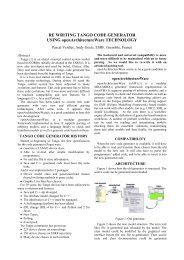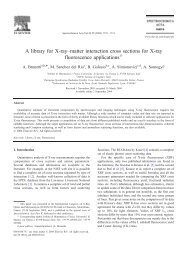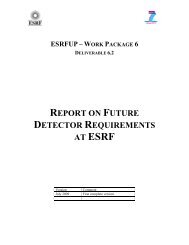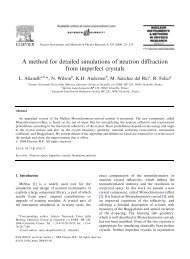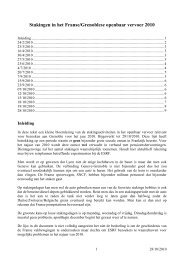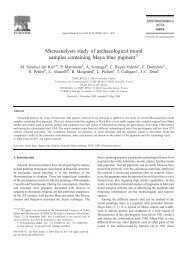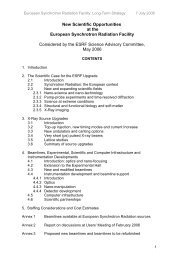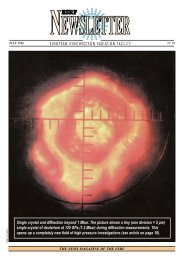Ray tracing - ESRF
Ray tracing - ESRF
Ray tracing - ESRF
You also want an ePaper? Increase the reach of your titles
YUMPU automatically turns print PDFs into web optimized ePapers that Google loves.
Mirror optics<br />
Surface errors and their implementation in SHADOW<br />
❑ Figure: (macroscopic ondulations of the surface, giving the surface shape (plane, spherical...),<br />
and deformations produced by the manufacturing errors, thermal loads and mechanical<br />
stress.<br />
In SHADOW we use a mapping of the surface (from FEM, etc.) or include directly the error<br />
parameters (surface radius,...)<br />
❑ Slope errors: generally considered as sinusoidal-like variations of the surface shape. It<br />
spreads the image in the focal plane due to the deflection of the incident rays at different<br />
angles.<br />
In RT <strong>tracing</strong> we use a reflection model with a mapping of the surface (d~mm>>λ, ie., geometrical<br />
optics regime)<br />
❑ Roughness: Random irregularities in the micro or sub-microscopic scale, which depends<br />
on the manufacture processes and materials. It increases the scattering of the photon beam,<br />
producing a blur of the image in the focal point.<br />
In RT, as it is impossible to characterize deterministically the surface, a statistical approach<br />
based on the diffraction theory is used.<br />
Manuel Sánchez del Río<br />
Computer simulations for X-ray optics (13 of 33)<br />
PSI, Feb 1998



